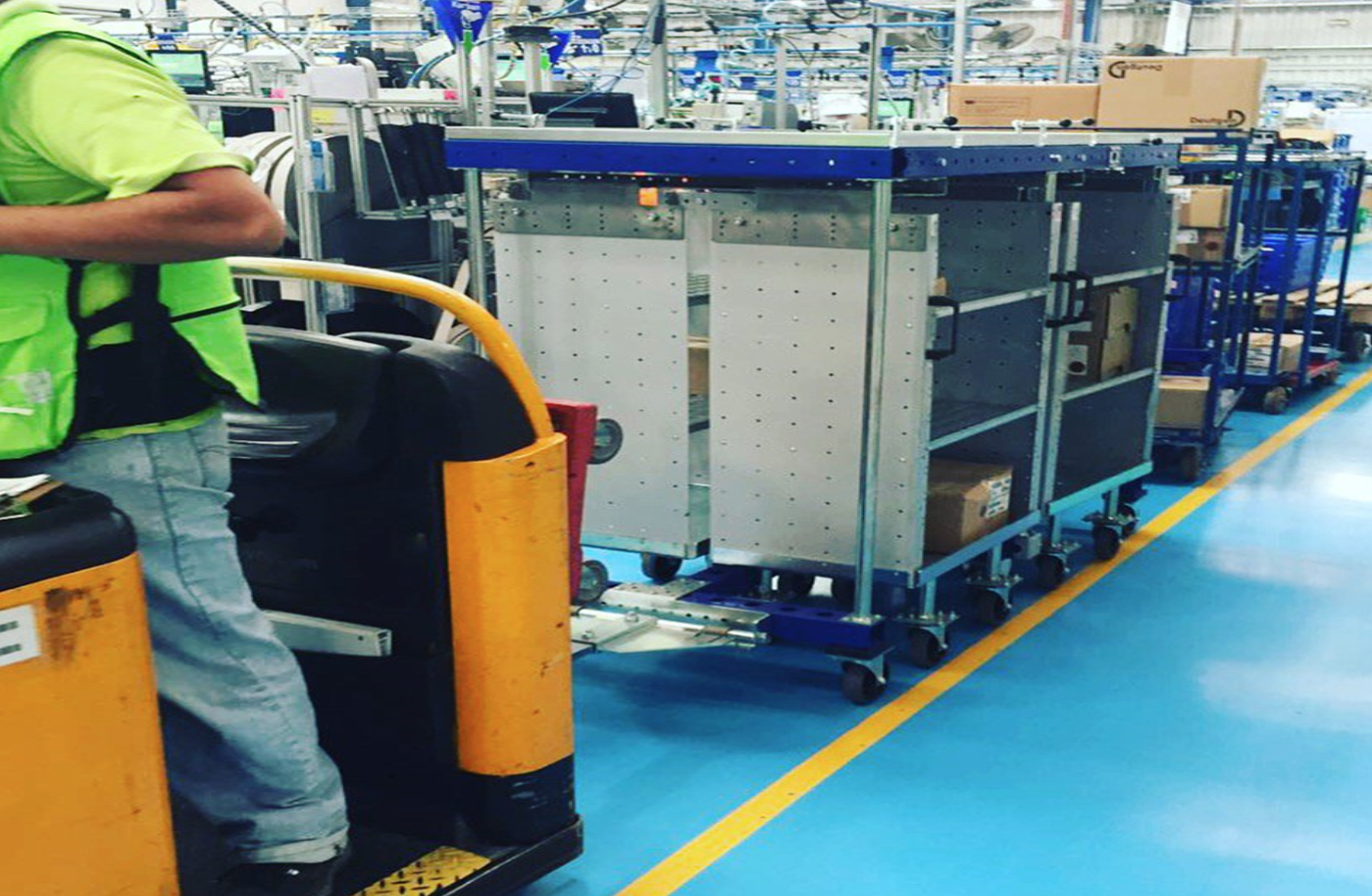
Capturing Improved Productivity: Tugger Train Automation
By Andy Legut, FlexQube
Too often automation and robotics are characterized by sensors driving Industry 4.0 and the Industrial Internet of Things (IIoT).
There are ways to efficiently automate material flow and lean manufacturing principles today. It starts with automating into a fork truck free environment.
Ultimately the reason for automation is to capture improved productivity. Cesar Jimenez, a Toyota Material Handling, USA employee shared that a forklift can only carry up to two loads at a time.
A tugger with multiple heavy-duty carts can be pulled and moved at the same time. The result is improved safety and productivity.

Beneficial for Workers
The ergonomic design of tow tractors is beneficial to workers. With the help of tow trucks, people can move heavy carts without strain.
Workers no longer experience the same fatigue they get from using forklifts. The stay alert and productive for a longer period.
Unlike forklifts, tugger trucks are easy to use so anyone can operate them. They allow more flexibility in workstations since the products can be moved from one location to another by anyone who is available.
The products are also safer since the loads are simply attached to carts. The truck allows visibility for drivers. It can maneuver around tight turns and does not tip over.
The latest OSHA statistics indicate there are more than 100 forklift fatalities and 34,900 serious injuries each year, with 42 percent of the forklift fatalities from the operators being crushed by a tipping vehicle. Automating to a tugger pulling carts saves lives.
The safety of heavy-duty carts has a positive impact on overall productivity and cost. There are no known major accidents caused by tugger train systems.
The ergonomic design reduces injuries and musculoskeletal disorders; workers experience less fatigue and fewer injuries. There are fewer absences and lower workers’ compensation insurance claims.
The Fork Truck Free Trend
The automation and safety benefits explain the developing trend towards reducing forklift usage and even ultimately going completely fork truck free (FTF).
Operational costs for fork trucks define an expensive piece of equipment on the plant floor.
Migrating to an automated material flow process means that maintenance, repairs, and fuel costs can curb a significant expense from a company’s budget.
Additionally, the salary paid to forklift operators who undergo specialized training and certification before authorized to operate fork trucks explains the FTF trend.
Tugger trains consume less energy and saves time. A train can move more than one load at a time by linking multiple carts to a single tugger. Tugger trains are less expensive than forklifts and tugger train operators are paid less than forklift operators.
Automating a process needs justification. Tugger trains are justified by improved safety and increased productivity.

Author profile: Andy Legut is the Midwest Sales Manager for FlexQube, Inc. and the longest running North American employee for FlexQube. He has years of experience working alongside different manufacturing facilities and providing ergonomic, efficient, and safe FlexQube solutions. Legut is from Grosse Ile, MI (not far from Detroit) so he has grown up with the automotive industry in his blood. Legut can be reached at (734) 624-2121 or andy.legut@flexqube.com.


